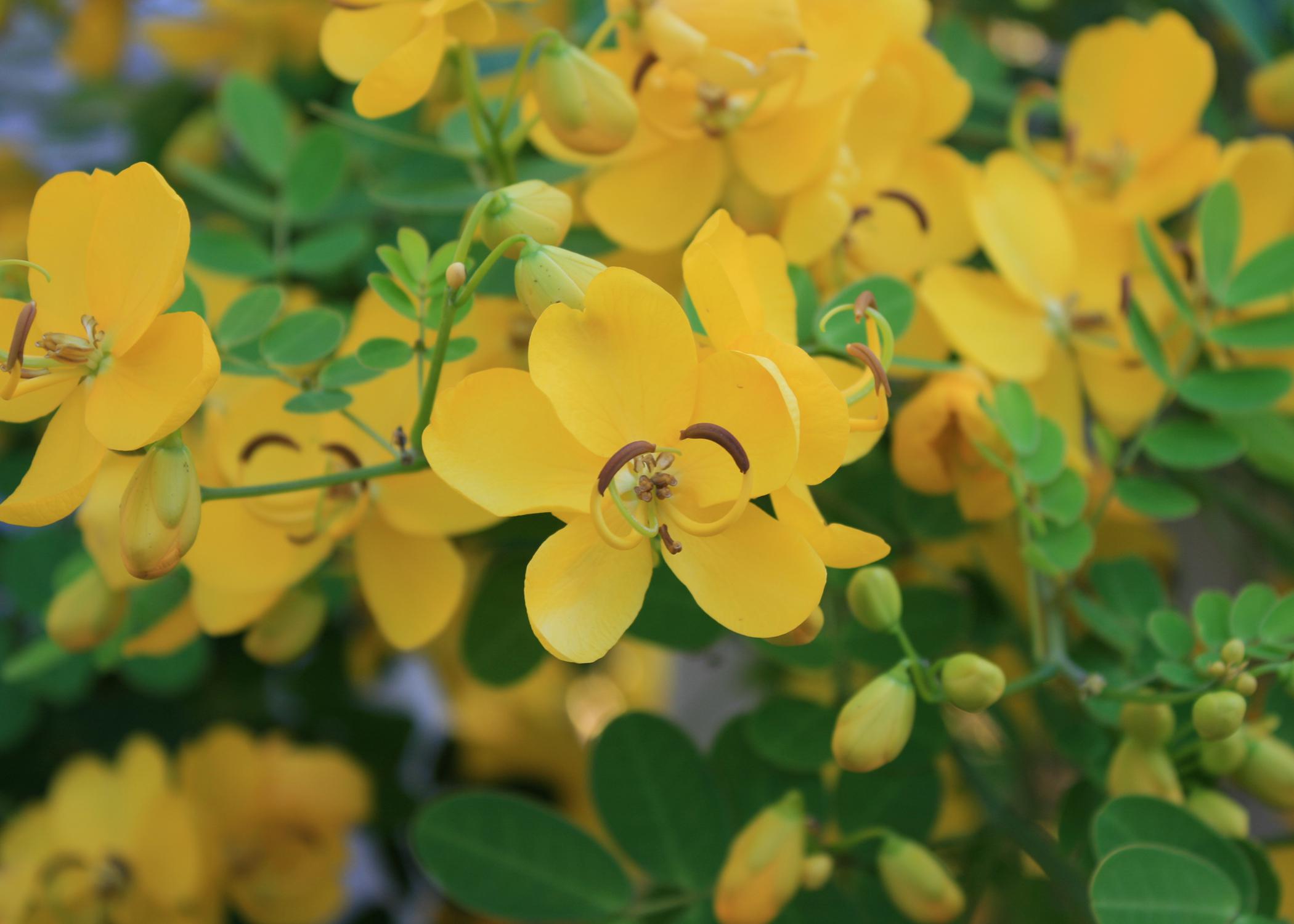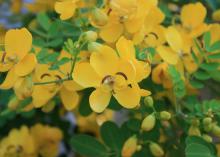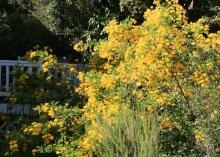Information Possibly Outdated
The information presented on this page was originally released on November 4, 2019. It may not be outdated, but please search our site for more current information. If you plan to quote or reference this information in a publication, please check with the Extension specialist or author before proceeding.
Winter cassia brings late-season blooms
Earlier this year, we were enjoying a cool and wet spring, and then one day, WHAM! We were thrown into a full-blown hot and dry summer that seemed never-ending.
This past week, we went from still pretty warm summer temperatures one day to lows in the 30s and 40s the next day. I had a shock when I was out of town visiting family and woke up to 27 and 29 degrees.
Now everyone has decided it’s time to start planting cool-season colors using pansies (refer to my Matrix pansy column from a couple of weeks ago), violas (I’ll share my favorites next week) and leafy greens like kale, cabbage and Swiss chard.
But there’s a hardy shrub, found mainly in coastal counties, that always draws attention in the fall of the year with the bright, yellow flowers it displays. Not many gardeners actually know its name, but the selection I see most is commonly called winter cassia. This is an easy-to-grow plant that requires little maintenance except for some pruning to tidy it up.
Cassia’s large flower clusters form towards the ends of slender branches. They can be so heavy that the branches are pulled down, giving many plants a distinctive, vase-shaped form. This effect can be accentuated after a rain or heavy dew.
The leaves are pinnately compound, which means a row of leaflets forms on either side, with three to five pairs of oval-shaped leaflets. The foliage is a deep green in the summer, but with falling temperatures, these leaflets display a greenish-yellow color.
While the leaf shape and color do have landscape interest, winter cassia primarily fills in garden gaps and provides a consistent backdrop for more showy summer plants.
Good drainage is a must, as cassias do not like wet feet. Nor do they tolerate droughty soil conditions. Growing cassias in containers would be a great idea. I’ve never actually seen anyone do this before, so you have the opportunity to be the first.
Growing in containers is also a great option for gardeners in north Mississippi to enjoy this plant. It is easy to provide good winter protection when the plant can be brought indoors.
There are several selections of winter cassia available in the nursery trade, but be sure to plant all of them in the full sun to ensure the best flower production.
One pretty location I’ve found that works well is planting them in the edge of a shady landscape bed, especially one with western exposure. This type of location allows the plant to get enough sunlight, and it looks great when the flowers suddenly pop out in the fall as other plants are starting to wind down for the year.
If you don’t have this hardy shrub in your landscape, plan now to include it in the future.




